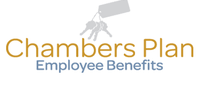Are you a Chamber member and you have a press release or news story about your business that you should like us to share? Email Kim Phair
Using Artificial Intelligence to Develop Workplace Policies
In an era marked by rapid technological advancements, Artificial Intelligence has emerged as a powerful tool for various industries, including workplace health and safety. Ensuring the safety and well-being of employees is a major concern for organizations worldwide, and by leveraging AI, businesses can develop more effective and proactive workplace health and safety policies. However, these tools are often prohibitive for smaller companies and the AI tools that are available to most people are not ideal for adoption in the workplace when health and safety are concerned.
One of the key ways AI contributes to enhancing workplace health and safety policies is through predictive analytics. AI algorithms can analyze vast datasets encompassing accident reports, incident records, and environmental conditions. This data-driven approach allows organizations to identify potential hazards and predict safety risks with greater accuracy. By identifying potential issues before they escalate, companies can take proactive measures to mitigate risks, reducing the likelihood of accidents and injuries.
One of the key considerations, however, is which tools are used and how they are implemented. When looking at the most commonly used AI tools such as ChatGPT, there is still a lot of room for error when generating basic text prompts. As pointed out by the WSPS, using ChatGPT to create workplace policies or finding answers to more nuanced safety concerns often results in inaccurate or outdated information. Text-based AI tools are capable of creating a draft or copy that sounds and looks good but the actual details of a prompt are just that; things that sound and look good. ChatGPT as it is built right now has a hard time verifying information or finding answers to specific questions.
In short, any workplace policy that is drafted using an AI tool should be fact-checked by human experts.


